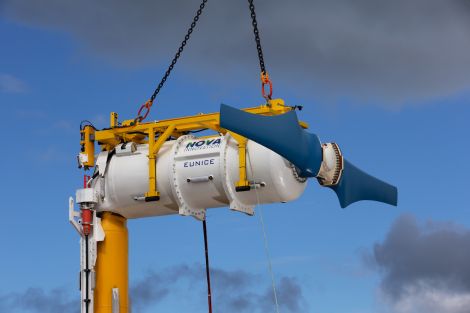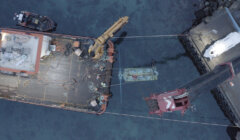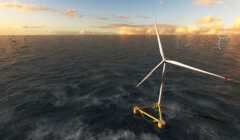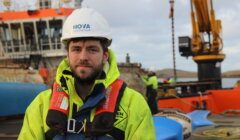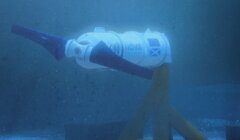Energy / Nova looking to decommission older tidal turbines
IT WAS only in January that a tidal energy project in Bluemull Sound became the largest of its kind in the world as it expanded to six turbines.
But that number is set to half soon when three of the six are removed and decommissioned – although it will make space for any potential future expansion.
The trio of turbines in question at the 600kW Nova Innovation tidal array are the older prototypes, and they do not produce nearly as much energy as the newer ones.
The removal of the first three will provide Nova with “unique learning” around the decommissioning of tidal turbines, according to the company’s offshore manager Tom Wills.
The decommissioning, which will involve recycling and disposal, could also pave the way for more turbines being installed at the site near Cullivoe.
The first three turbines were installed in 2016 as Edinburgh-based Nova sought to test its technology, creating the world’s tidal energy array in the world and injecting some power to the Shetland grid.
Their maximum height is around 14 metres, weighing around 150 tonnes when including the removable concrete ballast.
Supported by the European Commission’s flagship €20 million EnFAIT (Enabling Future Arrays in Tidal) research project, which aims to demonstrate, the “bankability” of tidal energy, a further three have since been installed.
In late January this year Nova confirmed turbine number five and six were installed. A fourth was put in place in 2020.
Nova Innovation also has consent to lease seabed between Yell and the island of Bigga for a much larger tidal energy project.
But Wills said the EnFAIT project comes to an end in June.
Decommissioning of the older three turbines is currently planned to take place in late April and May, and the process could take around two weeks.
Become a member of Shetland News
“As part of the final stages of the EnFAIT project, Nova will be decommissioning the older turbines in the Shetland Tidal Array,” Wills said.
“This will involve the removal of the older turbines and their power export cables from Bluemull Sound.
“This will enable unique learning about decommissioning to be captured and shared, as well as making space for a future expansion of the project.
“The partial decommissioning phase of the EnFait research project will provide further solid evidence of the full lifecycle cost of tidal energy.”
He explained that the three newer turbines produce “significantly more power” than the early prototypes, so “removing the older machines make sense”.
Wills added that the environmental impacts of removing the turbines will be “minimal” as they can be lifted from the seabed by small workboats.
Become a member of Shetland News
Shetland News is asking its many readers to consider paying for membership to get additional features and services: -
- Remove non-local ads;
- Bookmark posts to read later;
- Exclusive curated weekly newsletter;
- Hide membership messages;
- Comments open for discussion.
If you appreciate what we do and feel strongly about impartial local journalism, then please become a member of Shetland News by either making a single payment, or setting up a monthly, quarterly or yearly subscription.
















